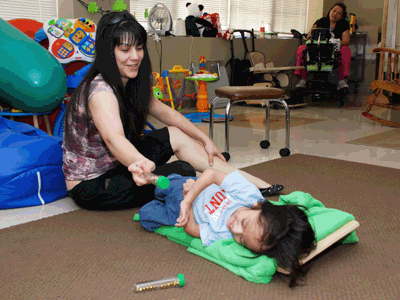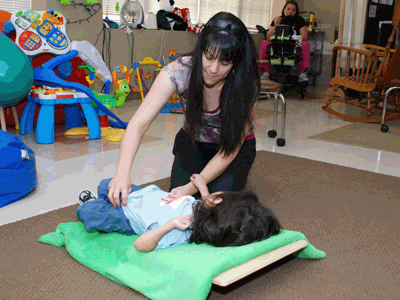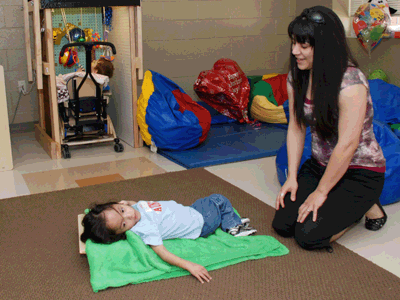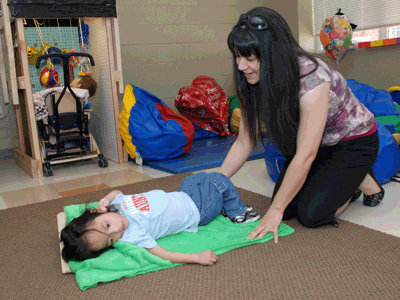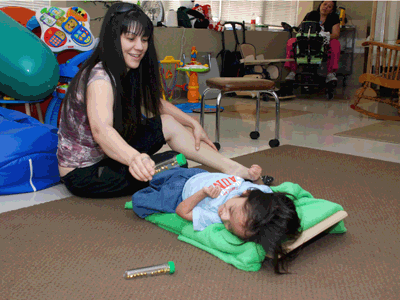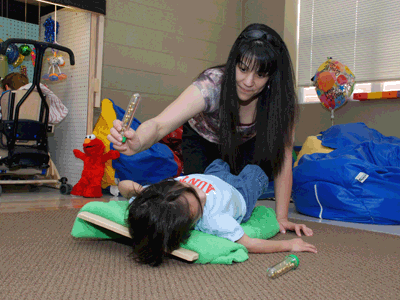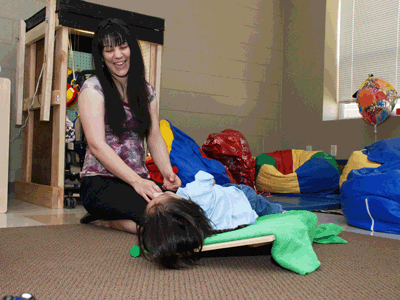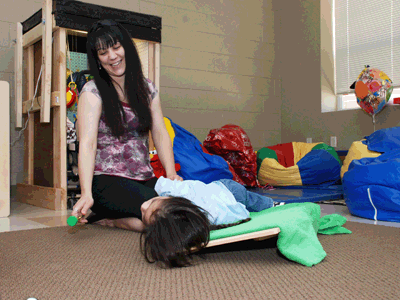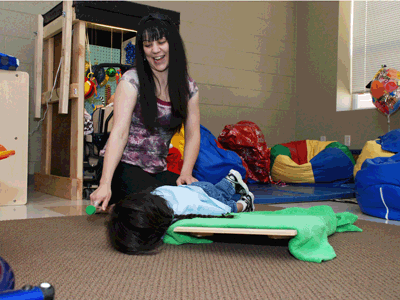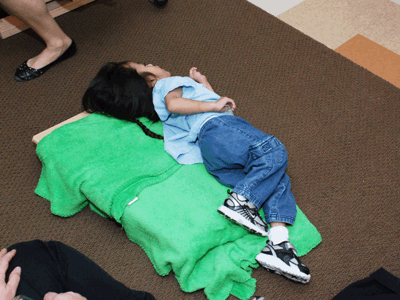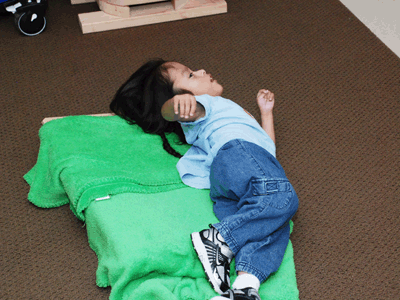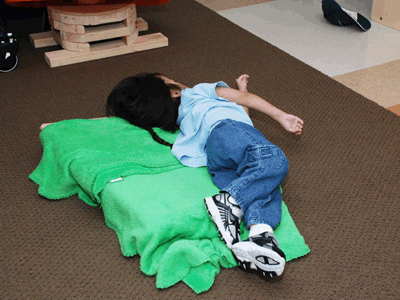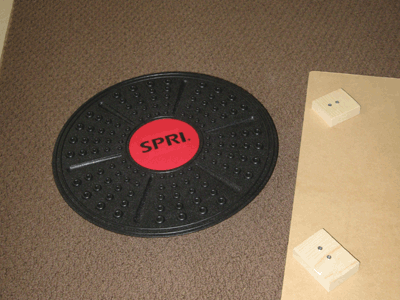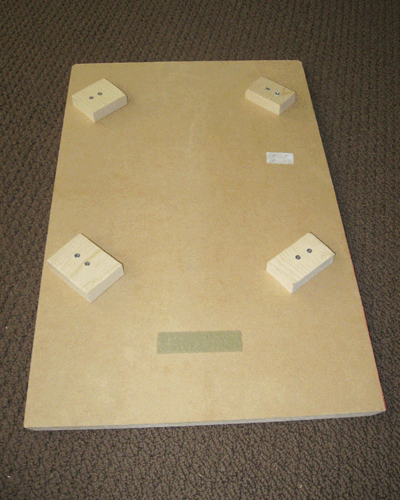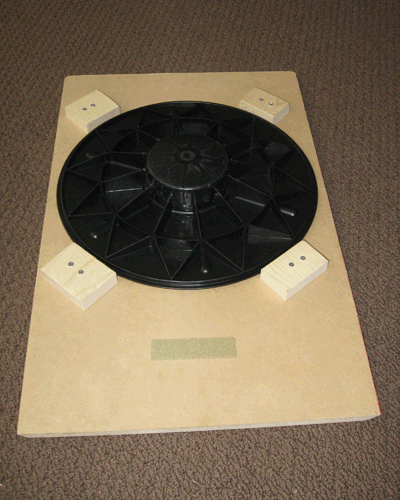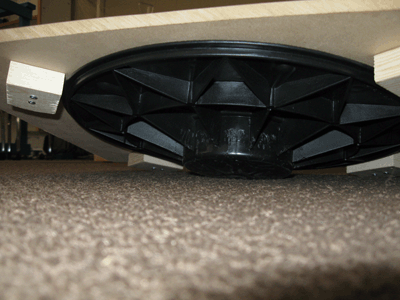|
Home | Programs | Contact | News & Events | For Parents | For Students | VI Resources | Photos |
||||||||||||||||||||||||||||||||||||||||||||||||||
|
|
||||||||||||||||||||||||||||||||||||||||||||||||||
|
The Instability Board is a simple device designed to help students with multiple impairments begin to roll over without the physical assistance of others. A student is placed on the board either in the prone or supine positions. The board is set in ‘neutral’, so that movement by the student to the left or right causes the board to tip to that side. The student is then rolled off of the board and onto the floor, the surface of which is covered by a pad, mat or blanket. Students who have used the Instability Board have been seen to thrust an arm across the body in order to raise that shoulder and initiate the roll. A variety of different leg movements have also been used to start the roll. The adult-free roll has been motivating to the students who have used the Instability Board, even though the movement is fairly sudden. Completing the roll requires the student not be blocked by the arm that first makes contact with the ground. Some of the students have adapted to this by drawing that arm close to the body and done so without physical prompting. The downside to the Instability Board is that it is a one way motion—down and off the board. The students who are appropriate for the Instability Board can’t then roll back the other way once they’ve rolled off the board. It is, however, a way to encourage independent movement. The Instability Board is as long as it is (24”) so that most (or all) of the student can rest atop it. Were the student placed on just the wobble board it is likely that the student would be unable to roll as the legs, arms, and part of the torso not on the small wobble board would impede rolling. Educators: Please feel free to construct and use this device at your discretion. However, NMSBVI assumes no liability regarding this innovation or its use/misuse.
For additional information, please contact the inventor, Ron Later, at
rlater@nmsbvi.k12.nm.us
The Instability Board is ridiculously easy to create. A ¾”x15”x24” piece of plywood is sanded and beveled so there are no sharp corners. A wobble board, found at any number of fitness stores, is then locked into place on the underside of the plywood. While the wobble board could be attached directly to the piece of plywood, this particular board features 4 wooden blocks that keep the wobble board from sliding. With the Instability Board atop the wobble board, gravity and the 4 wooden blocks hold the wobble board in place.
|
||||||||||||||||||||||||||||||||||||||||||||||||||
|
|
||||||||||||||||||||||||||||||||||||||||||||||||||
| Serving the Youth of New Mexico and Their Families since 1903 | ||||||||||||||||||||||||||||||||||||||||||||||||||
| Please read the
Terms
And Conditions Of Use
carefully before using this site. If you do not agree to these terms and conditions of use, please do not use this site. Comments to: webmaster@nmsbvi.k12.nm.us Last Updated: 4/2/2012 |

